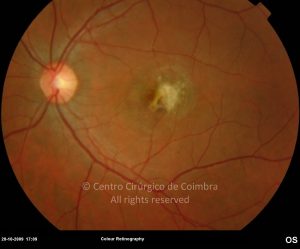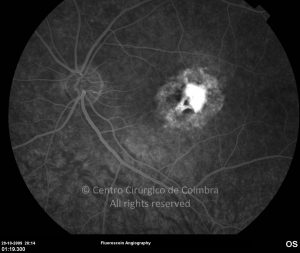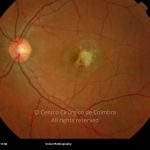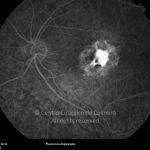As membranas neovasculares coroideias têm sido encontradas num número significativo de jovens e jovens adultos, sem uma causa aparente.
As características estruturais de algumas membranas neovasculares submaculares (MNVS) excisadas são semelhantes às de MNVS de doentes com a síndroma de histoplasmose ocular presumida. Muitas vezes apresentam-se como uma elevação cinzenta no fundo ocular à qual se associa um anel de pigmento.
Os doentes podem desenvolver perda de visão central secundária a descolamento seroso e/ou hemorrágico da mácula, causada pela neovascularização coroideia.
Em muitos doentes não se observam quaisquer sinais de doença ocular sistémica e não há evidência de células no vítreo, condensações ou vasculite. A causa destas membranas permanece desconhecida.
Diagnóstico Diferencial
- Miopia degenerativa
- Estrias angióides
- DMRI exsudativa
- Coriorretinopatia serosa central
- Síndroma de histoplasmose ocular presumida.









